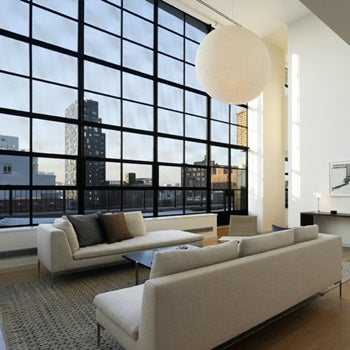Wood doors are a timeless and versatile choice for both residential homes and commercial buildings, offering a combination of aesthetic appeal, durability, and functionality. In this comprehensive exploration, we will delve into the various aspects of wood doors, including their history, manufacturing process, types, benefits, applications, and considerations for choosing the right wood doors for different settings.
Benefits of Wood Doors:
Wood doors offer several advantages that make them a popular choice for residential and commercial applications:
1. Natural Beauty: Wood doors have a warm and inviting appearance that adds character and charm to any space. The natural grain patterns, textures, and colors of wood create a sense of warmth and richness that cannot be replicated by synthetic materials.
2. Versatility: Wood doors are highly customizable and can be tailored to match a wide range of architectural styles and design preferences. They can be stained, painted, or finished in various colors and sheens to complement the existing decor and furnishings.
3. Durability: High-quality wood doors are durable and long-lasting, capable of withstanding daily wear and tear for decades with proper care and maintenance. They are resistant to dents, scratches, and impact damage, making them ideal for high-traffic areas in both residential and commercial settings.
4. Insulation: Wood doors offer excellent thermal insulation properties, helping to regulate indoor temperature and improve energy efficiency. They provide a barrier against heat loss or gain, reducing heating and cooling costs and creating a more comfortable indoor environment.
5. Sound Insulation: Wood doors have natural sound-dampening properties, helping to reduce noise transmission between rooms and floors.This is especially beneficial in commercial buildings, hotels, and multi-family residences where privacy and quiet are essential for occupant comfort.
6. Environmental Sustainability: Wood doors are a renewable and environmentally friendly building material, as they are sourced from responsibly managed forests and can be recycled or repurposed at the end of their service life. Using wood doors helps to reduce carbon emissions and promote sustainability in construction and design.

Introduction to Wood Doors
Wood doors have been used for centuries and continue to be a popular choice for both interior and exterior applications due to their natural beauty, warmth, and ability to complement a wide range of architectural styles. From classic paneled doors to intricately carved designs, wood doors offer endless possibilities for customization and personalization, making them a versatile option for enhancing the visual appeal of any space.
History of Wood Doors:
The use of wood for doors dates back to ancient civilizations, where early humans fashioned rudimentary doors from timber to provide shelter and security. Over time, as woodworking techniques evolved, doors became more refined and decorative, adorned with intricate carvings, moldings, and embellishments. In medieval Europe, wood doors were often crafted by skilled artisans and served as symbols of wealth and status, with elaborate designs reflecting the owner's social standing and taste.
Manufacturing Process of Wood Doors:
Modern wood doors are typically manufactured using a combination of traditional woodworking methods and advanced technologies. The process begins with the selection of high-quality lumber, such as oak, mahogany, cherry, or maple, which is kiln-dried to remove moisture and prevent warping or shrinking. The lumber is then cut and shaped into door components, including stiles, rails, panels, and moldings, using precision machinery and hand tools. These components are assembled and joined using traditional joinery techniques such as mortise and tenon or dowel construction, ensuring strength and stability. Finally, the door is sanded, finished, and inspected for quality before being shipped to the customer.
Types of Wood Doors:
Wood doors are available in a wide variety of styles, configurations, and finishes to suit different aesthetic preferences and functional requirements. Some common types of wood doors include:
1. Panel Doors: These doors feature raised or recessed panels framed by stiles and rails, creating a classic and traditional look. Panel doors are available with various panel configurations, including single-panel, two-panel, three-panel, and six-panel designs, allowing for customization to match the architectural style of the home or building.
2. Flush Doors: Flush doors have a smooth, flat surface and minimalistic design, making them suitable for modern and contemporary interiors. They are often used for interior applications where a clean and understated look is desired.
3. French Doors: French doors consist of multiple glass panels framed by wooden stiles and rails, providing a seamless connection between indoor and outdoor spaces. They are commonly used for exterior applications such as patio doors or interior applications between rooms where visibility and natural light are desired.
4. Barn Doors: Barn doors are mounted on a track and slide horizontally along the wall, offering a space-saving solution for interior door openings. They are often used for closets, pantries, or room dividers, adding a rustic and farmhouse-inspired touch to the space.
5. Carved Doors: Carved doors feature intricate designs, patterns, or motifs carved into the wood surface, creating a decorative and ornate look. They are often used as entry doors or focal points in grand entrances, adding a touch of elegance and sophistication to the home or building.
6. Fire-Rated Doors: Fire-rated doors are specially designed to withstand fire and smoke for a specified duration, providing an added layer of protection in commercial buildings and multi-family residences. They are constructed with fire-resistant materials and components, including solid wood or composite cores, intumescent seals, and fire-rated glazing.
Applications of Wood Doors:
Wood doors are used in a wide range of residential and commercial applications, including:
1. Entry Doors: Wood entry doors make a bold statement and serve as the focal point of the home's exterior, welcoming guests with their warm and inviting appearance.
2. Interior Doors: Wood interior doors provide privacy, separation, and visual continuity between rooms, enhancing the flow and functionality of the space.
3. Patio Doors: Wood patio doors connect indoor and outdoor living spaces, allowing for seamless transitions and unobstructed views of the surrounding landscape.
4. Commercial Doors: Wood doors are used in commercial buildings, offices, hotels, restaurants, and retail establishments to create a welcoming and professional environment for customers and employees.
5. Historic Preservation: Wood doors are often used in historic preservation projects to maintain the architectural integrity and character of historic buildings and landmarks.
6. Custom Projects: Wood doors can be custom-designed and manufactured to meet specific project requirements, including size, shape, style, and finish, allowing for creative and unique architectural solutions.
Considerations for Choosing Wood Doors:
When selecting wood doors for residential or commercial projects, several factors should be considered to ensure the right fit and performance:
1. Style and Aesthetics: Choose a door style, design, and finish that complement the architectural style and interior decor of the home or building.
2. Material and Construction: Consider the type of wood species, construction method, and quality of materials used to ensure durability, stability, and performance over time.
3. Functionality and Security: Determine the desired functionality of the door, including swing direction, operation, hardware, and security features such as locks, deadbolts, and hinges.
4. Energy Efficiency: Select wood doors with energy-efficient properties, such as insulated cores, weatherstripping, and low-emissivity (low-E) glazing, to improve thermal performance and reduce energy costs.
5. Maintenance and Care: Evaluate the maintenance requirements of wood doors, including cleaning, sealing, and refinishing, to ensure long-term beauty and performance.
6. Budget: Consider the overall project budget and cost of materials, labor, and installation when choosing wood doors to achieve the desired balance between quality and affordability.




